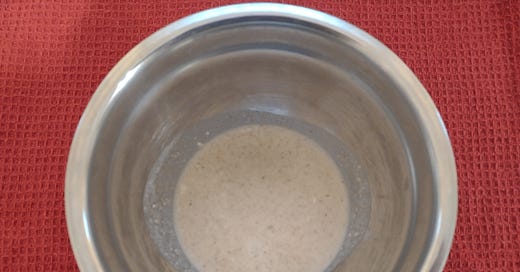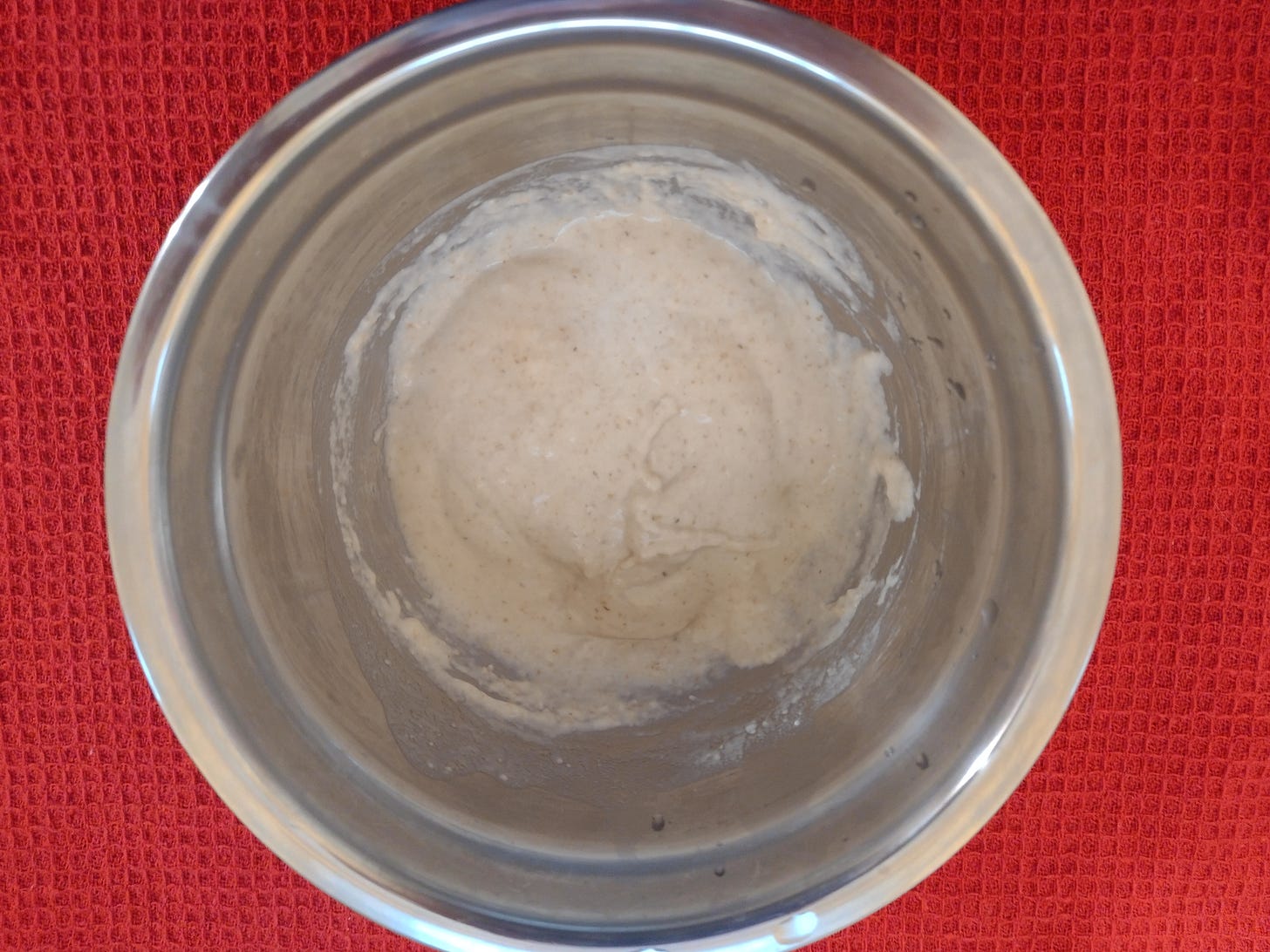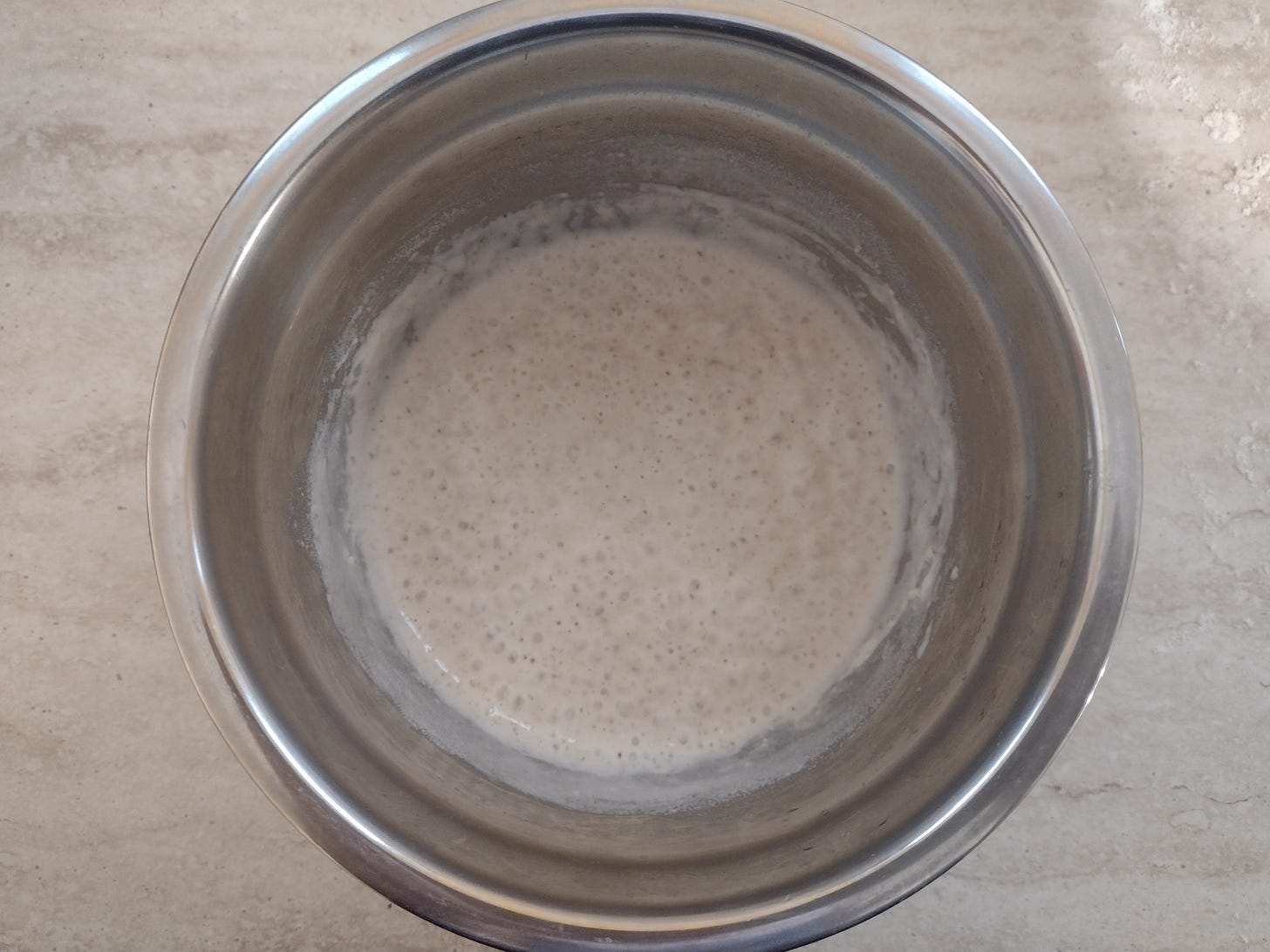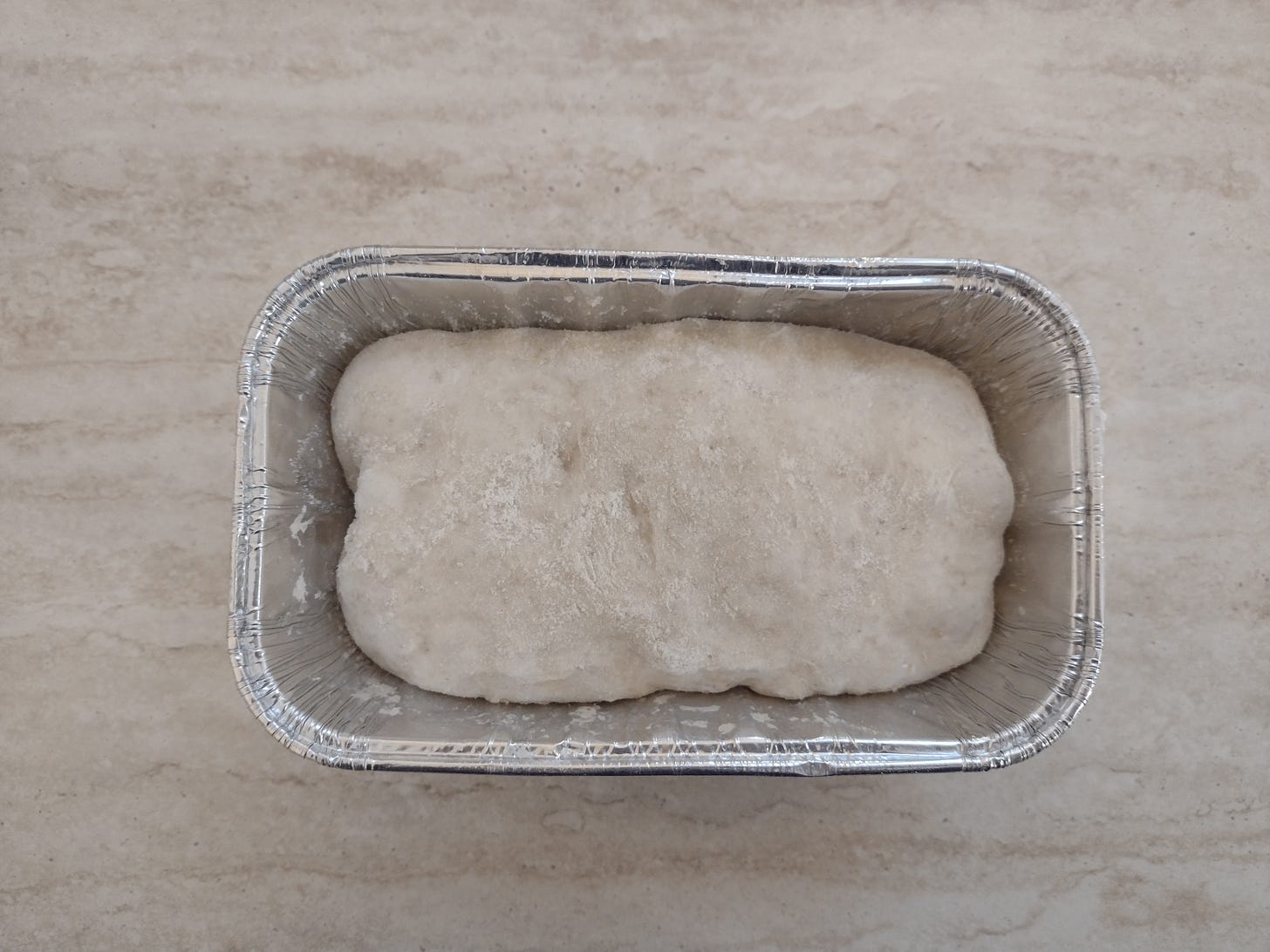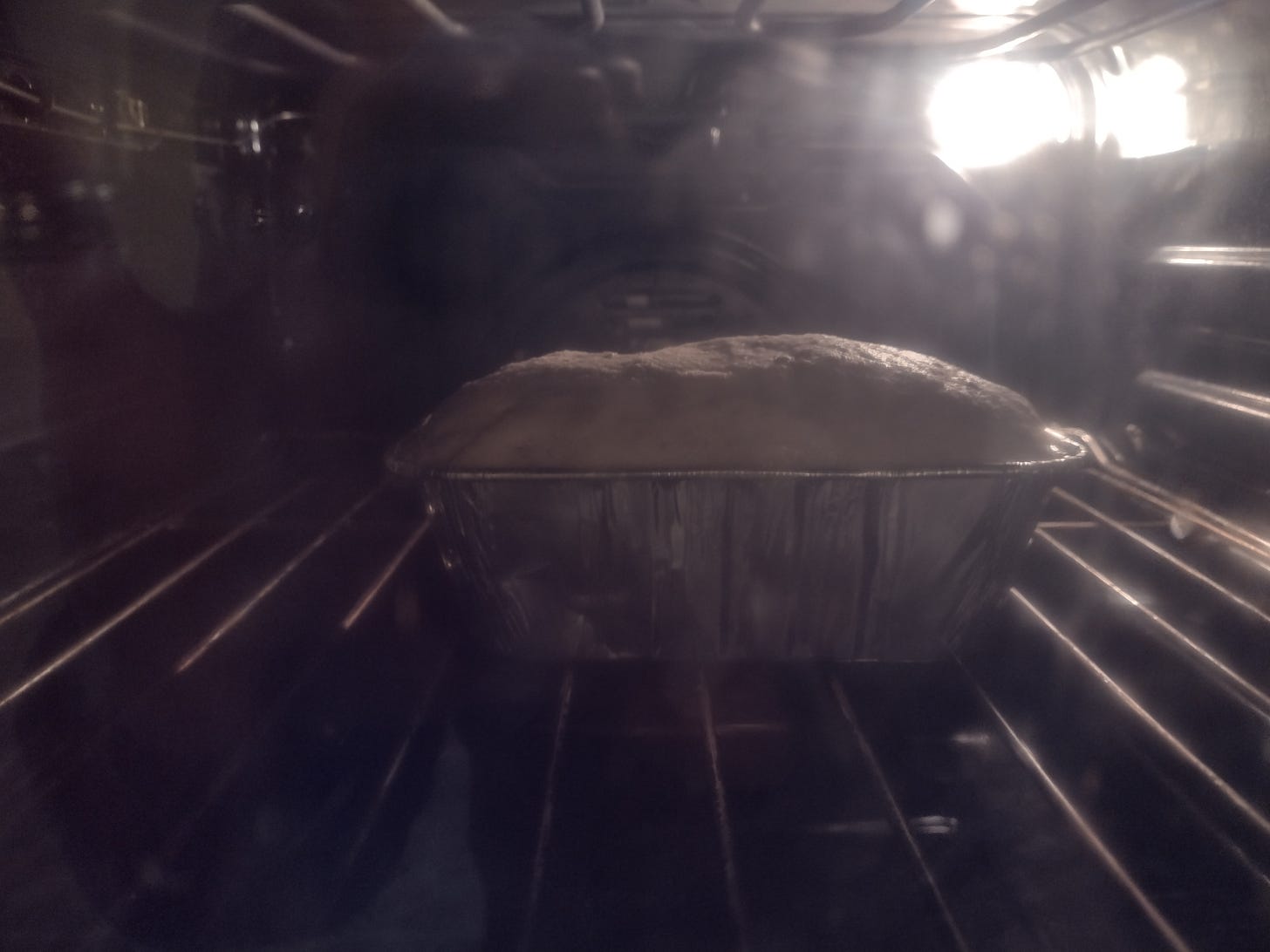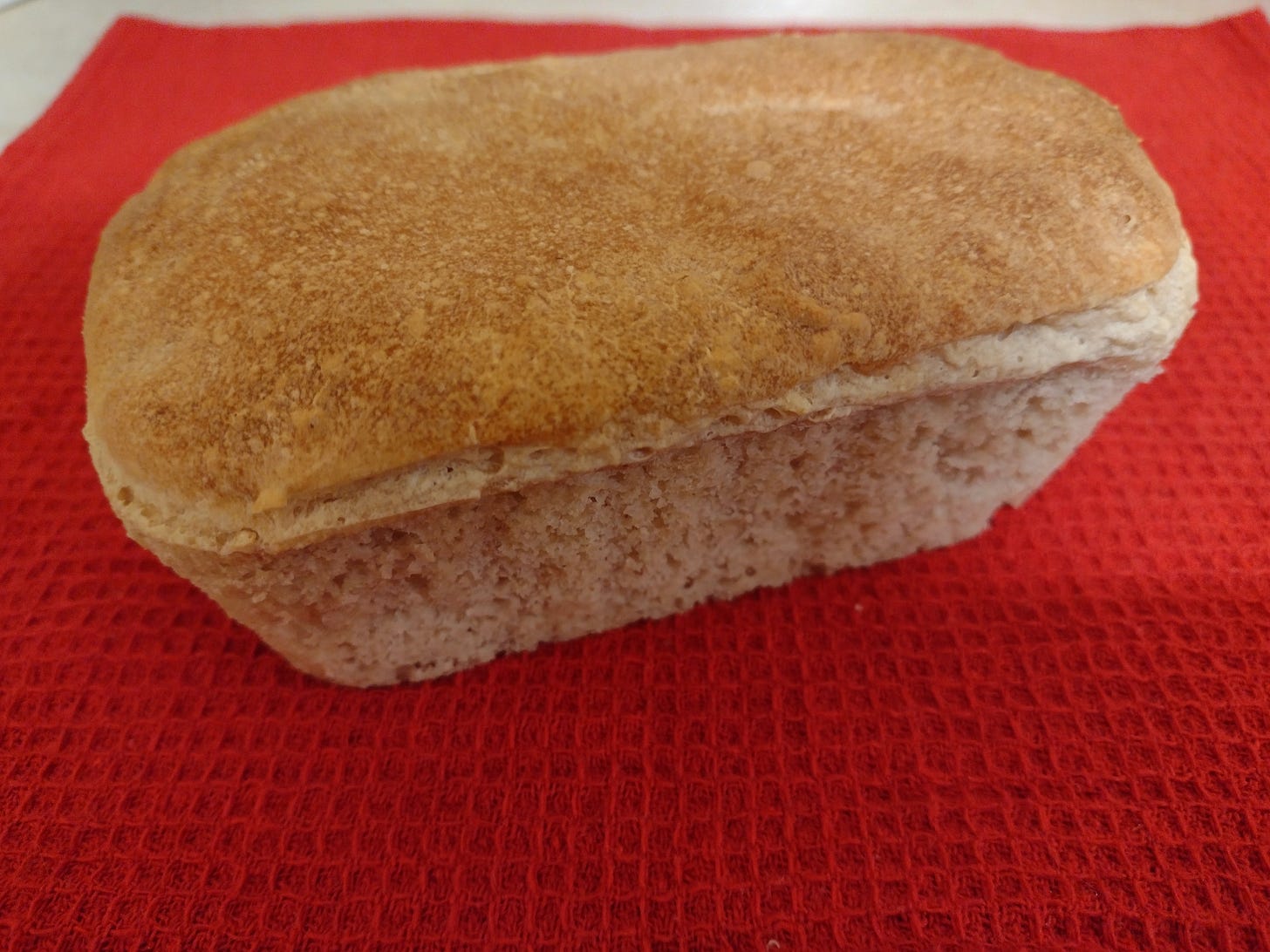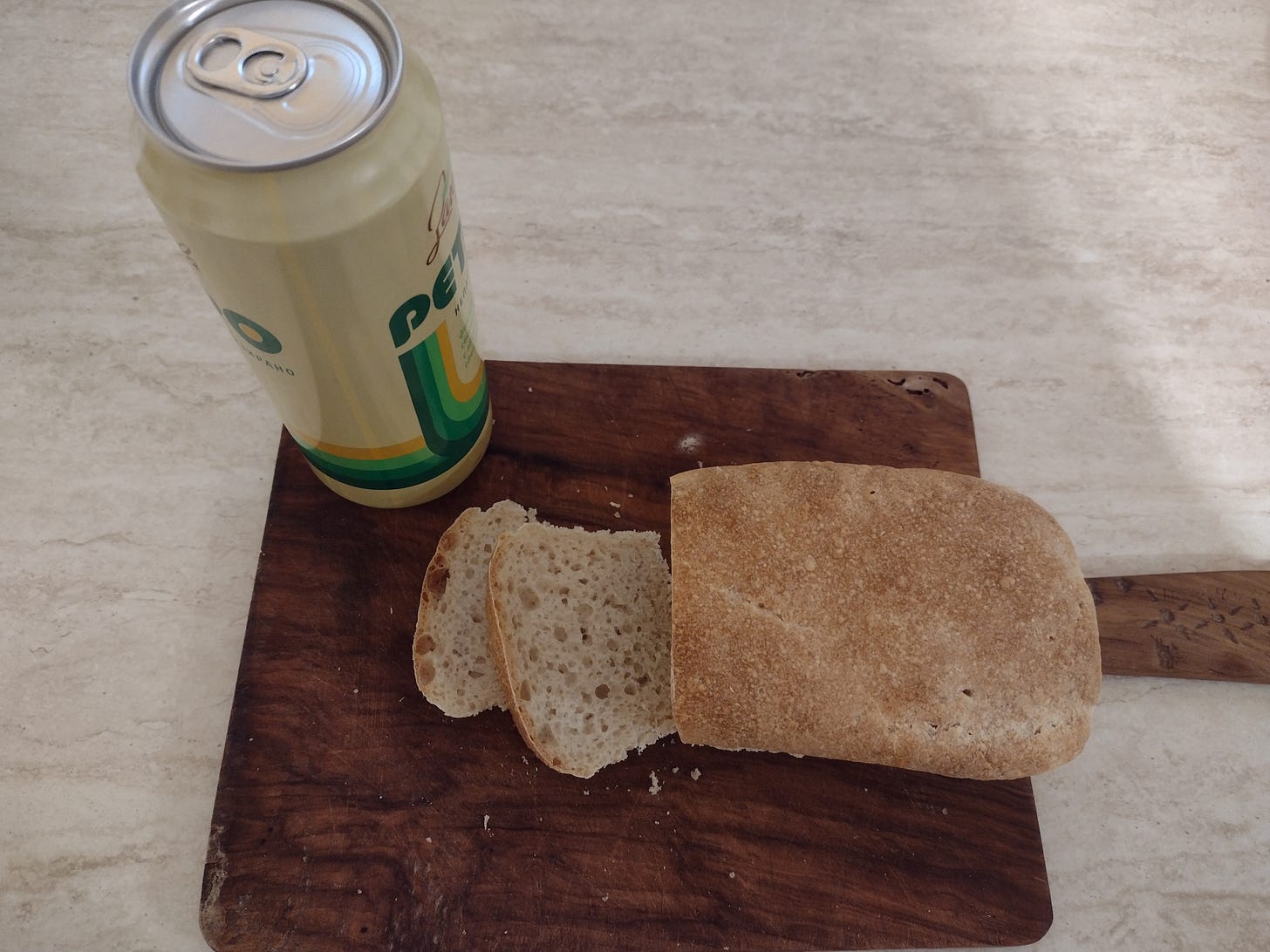This post is first person singular because only one person in this family cares about sourdough bread and that’s me, yours truly — planter, weeder, and chronicler of Slavs in the Garden. And bread baker.
It is a basic law in the discipline of badluckology and fatalistics that the more you try to achieve something, the more likely you are to fail. As someone with a PhD in that discipline I can vouch for the validity of this law and nowhere is evidence of it more abundant than in my adventures in the world of sourdough breadmaking.
It all started innocently enough, with me really wanting to make rugbrød, a Danish staple that, like most things Danish, holds a great appeal for me. The first failure came immediately even though I followed the recipe I’d chosen to the letter. A series of other failures followed until I finally gave up on rugbrød, resigning myself to store-bought rye bread.
The itch to keep trying with sourdough, however, stayed with me, which led to an extension of the failure series with the occasional success, which invariably included me forgetting to add salt. The bread rose perfectly but its taste was horribly bland. I despaired and stopped trying.
Until I decided to give sourdough another try, fully prepared for and expecting the failure. I am now on my third successful loaf, all because I stopped caring how it would turn out.
Nowadays, I simply throw in together a spoonful of all-purpose and another one of rye flour, add some water for a not-very-thick mixture and let the microorganisms do their job for the sourdough starter.
It never, ever looks like the starter in online recipes but, guess what, I don’t care. I add some flour every other day during the warm months or every three or four days in the cold months and in about a week I have a starter.
Here’s how it looks when I pour some to make actual bread. Not very exciting. That’s because I no longer care enough to feed the starter right before I use it which is when it looks a bit more exciting, with tiny bubbles in it.
I add some white flour (rye’s for the starter only) for a thick paste.
Here’s what happens after a few hours (if warm) or a day, day and a half later (if cold, like right now). It’s alive!
This is when I add some more water and flour for a runny dough, with half a teaspoon of salt, mix the concoction with a spoon for a bit, then turn out on the generously floured counter and knead carefully.
The trick for a fluffy sourdough bread, for me, is to make sure the dough remains soft, meaning with a high water content, meaning sticky rather than smooth, ciabatta-like.
I let it rise for however long it needs to fill the pan. Once it does, into the oven it goes.
Half an hour to 40 minutes at 210 C is usually enough for my tiny loaf.
Another proud moment after years of failure trying to follow complex recipes to the letter, which is obviously not one of the things I am capable of doing. (Beer can for scale because I really like to show off my bread and it is really hilariously tiny)

